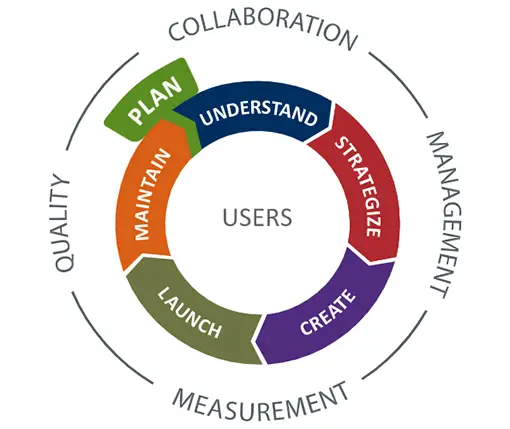Building high-quality, user-centered digital products that are both engaging and effective
Digital products, which include websites, applications, and virtual reality and augmented reality experiences, are channels through which information is delivered. Goals for digital products can range from increasing awareness and knowledge to changing attitudes, beliefs, and behaviors. Driven by the goals defined for a specific digital product, possibilities range from static to highly interactive interfaces and from widely applicable to individually tailored or customizable content, such as interactive infographics and data dashboards.
Our approach to developing digital products leverages the RTI Digital Product Development Lifecycle, a time-tested, evidence-based framework that prioritizes the user throughout every stage of product development. Taking a user-centered approach to development has benefits beyond increased ease of use, satisfaction, and trust in the product—it also results in fewer user errors and eliminates expensive rework. We created the framework to be flexible and iterative so it is useful for guiding the development of digital products regardless of their type or complexity.


Project Highlight
Digital Tools to Support Financial Decision-Making
We translated a research report with over 500,000 data points into the interactive and mobile-friendly Our Money Needs calculator for the United Way of North Carolina, earning their 2018 Spirit of North Carolina award. The calculator helps families understand whether they earn enough money to make ends meet. The free, confidential tool links people to tips and resources and is accompanied by the Let’s Talk Money: A Family Guide, which encourages families to engage in routine “money talks.”

Project Highlight
Customizable Decision Aids about Genomic Information
RTI has extensive experience developing digital health interventions and decision aids to help people make informed choices about their personal health, treatment, and participation in clinical research. In response to a growing number of requests for similar decision aids but a cumbersome development process, behavioral and information scientists from RTI’s Center for Communication Science, with support from the Inclusive Science Program at UNC-Chapel Hill, developed Semblie. Semblie is a flexible online platform that allows health professionals and researchers to rapidly develop and deliver tailored, interactive educational content and digital interventions. The system can be used to collect information from users through multiple question formats, and users can share information with others in their family or social networks.
Project Highlight
Helping to Reduce HIV Risk
RTI designed the HIV Risk Reduction Tool for the Centers for Disease Control and Prevention to provide comprehensive, up-to-date, tailored information while also helping users learn about factors that increase or decrease their HIV risk through an interactive risk graphic. Our user-centered approach involved conducting two stakeholder consultation meetings with experts, researchers, and advocates and engaging 455 community members in qualitative research and user testing across 10 cities. Through our rigorous evaluation, we observed statistically significant increases in demonstrated knowledge, intentions to communicate about HIV, and intentions and self-efficacy to engage in informed decision-making behaviors.
Let’s work together to improve the human condition and create social impact by leveraging digital technology
Related Projects
We Think Twice™: Digital Media Campaign Designed with Teens, for Teens
Read More about <em>We Think Twice</em>™: Digital Media Campaign Designed with Teens, for Teens


















